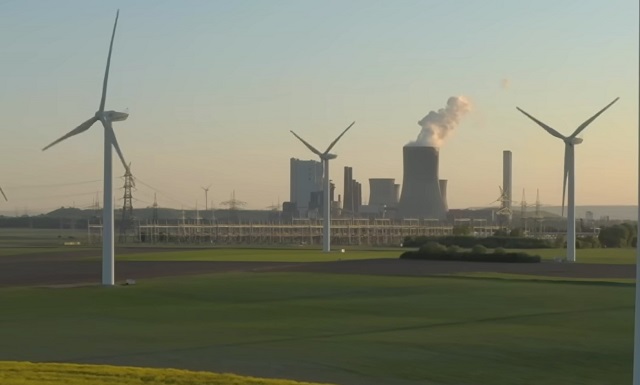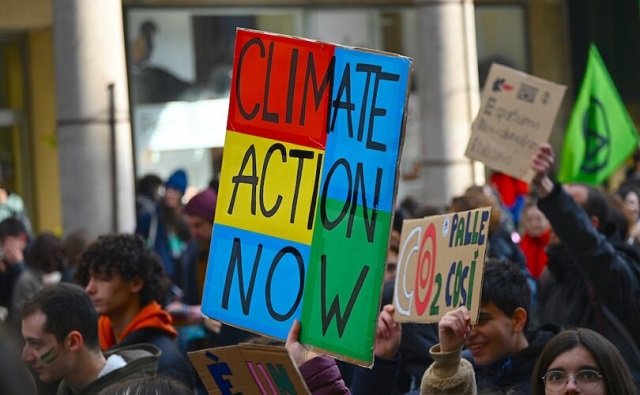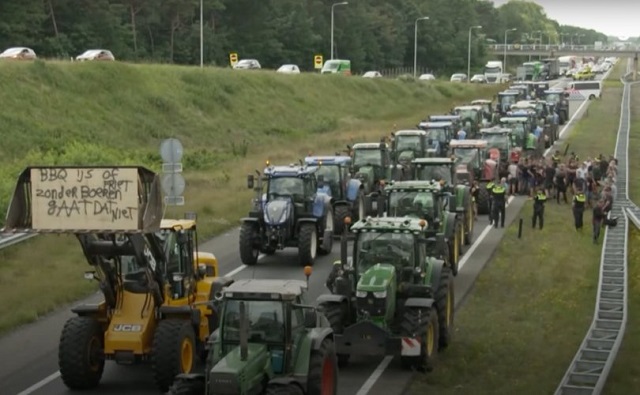Opinion
Can anyone blame the province for ignoring the plight of the students in overcrowded schools north of the river?
The chairman of the Red Deer Catholic School Board is hoping that there will be funding for expansion at St Patrick’s School in the Alberta budget. St. Patrick’s School is currently running at 130% capacity with a kindergarten class being taught in a hallway. St. Patrick is located north of the river, if anyone was wondering. They haven’t built a school north of the river in over 30 years.
Johnstone Park is north of the river, and originally there was a 8.64 acre site set aside for a public elementary school, but it was converted to a park and the school was built in the south-east sector instead. 30 years ago nearly 40% of the population lived north of the river, yet there was never a high school built, and the city decided to build in the south east. All schools and swimming pools, indoor ice rinks etc. were to be built south of the river.
Now only about 30% of the population lives north of the river, and 2016 saw an actual population decline when 777 residents left the area north of the river. What did the city and school boards expect.
They are opening up thousands of acres north of 11a and planning for 25,000 residents but still no plans for a high school, swimming pools or indoor ice rinks and possibly plans for 2 elementary schools. Compare this with the land around 67 Street and 30 Avenue intersection. 3 high schools, 1 junior high and 5 elementary schools.
I asked the Minister of Education for the reason that there is no plans for a high school north of the river, when there is a population of 30,000 residents and with the land north of Hwy 11a pushing the population north of the river to possibly 55,000 residents. He wrote and a staff member phoned and reiterated that it was the school boards who made the decision to not build north of the river and to concentrate 5 high schools along 30 ave.
During the public open house on the opening of land north of 11a, at city hall, I mentioned this both verbally and in writing, and was told that there are no plans for a high school, recreation centre, swimming pool or indoor ice rink north of 11a.
Councillor Lee asked the city planner if the school boards ever asked the city if they could build a high school north of 11a, and the planner said no. Councillor Lee should know, because if I am not mistaken weren’t the locations of the high schools determined when he was the chairman of the public school board?
From talking to some of people involved including the mayor at the time, I felt that it was a city led determination to not build the high schools north of the river but a compromise decision to build north east of the 67St. 30 Ave. intersection.
If the school boards decided to not build in Johnstone Park, but instead build a school in Inglewood, if the school boards and the city decided not to build a high school north of the river and instead have all 6 high schools south of the river, should they not be surprised if the province thinks that the students north of the river are not a priority?
Perhaps if the site that was originally designated for a public elementary school had been transferred over to the catholic school board, then perhaps the overcrowding at St. Pat’s would not have happened.
The province told me that it is up to the local school boards to plan properly, and it is up to people like us who actually live here to do something.
So Councillor Lee let us start with you. You were on the school board for 2 terms, you were the chairman part of that time, you then became a city councillor and you have orated your desire to be mayor. Why has there never been a high school north of the river? Why has there not been a school built north of the river since 1985? Why are we planning on 5 high schools along the 30 Ave. corridor? Please explain to the voters. Please explain to the students, past present and future, who must, have or will commute across the city twice a day to go to high school. Thank you.
Energy
Market Realities Are Throwing Wrench In Biden’s Green Energy Dreams

 From the Daily Caller News Foundation
From the Daily Caller News Foundation
For two years now, I and others have been pointing out the reality that there is no real “energy transition” happening around the world. Two new items of information came to light this week that irrevocably prove the point.
It is true that governments across the western world appear to be working to bankrupt their countries by pouring trillions of debt-funded dollars, Euros and British pounds into central planning efforts to subsidize renewables and electric vehicles into existence. That reality cannot be denied. The trouble is that no amount of debt money can turn the markets and the markets aren’t cooperating.
Despite all the government largesse that has spurred major additions of wind and solar generation capacity, those weather-reliant energy sources can’t even keep up with the pace of rising demand for electricity. As a result, the markets dictated that the world consumed record levels of coal, natural gas, oil and even wood during 2023. Yes, we are still burning vast amounts of wood for electricity, despite an alleged “transition” from wood to coal which began 500 years ago.
That is reality, dictated by the markets.
Two new bits of data came to light this week that pound the final nails into the coffin of the narrative around the energy transition. A report in the Financial Times, citing data compiled by Grid Strategies, reveals that the buildout of new high-voltage transmission lines in the United States slowed to a trickle in 2023, with just 55.5 additional miles installed. That collapse comes despite the Biden government’s recognition that a massive expansion of this type of transmission lines must happen to accommodate the demands of any true “transition” to renewables.
The Financial Times quotes a 2023 assessment by the Department of Energy that found that “regional transmission must more than double and interregional transmission must grow more than fivefold by 2035 to meet decarbonization targets.” DOE admits such a pace would add more than 50,000 miles of new transmission in just 11 years, which is almost 1,000 times the pace of adds during 2023. Yikes.
A crucial aspect of that DOE study to understand is that it was conducted before we began to understand the true magnitude of additional power demands that will result from the explosive growth of AI technology just now starting to come to full bloom. It was just this past January, at the WEF Forum in Davos, where OpenAI CEO Sam Altman told the audience he believes generation capacity on the grid will have to double over the next decade just to fill the AI demands alone. That is what is needed in addition to the rising demands for EV charging, industrial growth, population growth and economic growth.
The second piece of compelling data arising this week comes from a Bloomberg story headlined, “Data Centers Now Need a Reactor’s Worth of Power, Dominion Says.” The key thing to understand about this story is that the piece is only referencing the needs of planned new data centers being built in Northern Virginia to feed AI development in that tiny sliver of the United States.
This key excerpt from the story says it all: “Over the past five years, Dominion has connected 94 data centers that, together, consume about four gigawatts of electricity, Blue said. That means that just two or three of the data center campuses now being planned could require as much electricity as all the centers Dominion hooked up since about 2019.”
That is not just rapid growth, it is exponential growth in power demand from a single developing technology.
Demand growth needs such as this aren’t going to be filled by unpredictable, unreliable, weather-dependent generation like windmills and solar arrays. And let’s face it: The United States is not going to be able to continue expanding renewables without finding some way to create a massive expansion of transmission. Why build the generation if you can’t move the electricity?
What it all means is that all the grand Biden Green New Deal plans to shut down America’s remaining coal fleet and much of its natural gas generation fleet are going to have to wait, because the market will not allow them. That’s reality, and reality does not care about anyone’s green transition dreams.
David Blackmon is an energy writer and consultant based in Texas. He spent 40 years in the oil and gas business, where he specialized in public policy and communications.
The views and opinions expressed in this commentary are those of the author and do not reflect the official position of the Daily Caller News Foundation.
Business
UN plastics plans are unscientific and unrealistic

News release from the Coalition of Concerned Manufacturers and Businesses of Canada
“We must focus on practical solutions and upgrading our recycling infrastructure, not ridiculous restrictions that will harm our health care system, sanitary food supply, increase costs and endanger Canadians’ safety, among other downsides.”
This week Ottawa welcomes 4,000 delegates from the United Nations to discuss how they will oversee a reduction and even possible elimination of plastics from our lives. The key problem is no one has ever figured out how they will replace this essential component of our modern economy and society. The Coalition of Concerned Manufacturers and Businesses of Canada (CCMBC) has launched an information campaign to discuss the realities of plastic, how it contributes massively to our society and the foolishness of those who think plastics can be eliminated or greatly reduced without creating serious problems for key industries such as health care, sanitary food provision, many essential consumer products and safety/protective equipment, among others. CCMBC President Catherine Swift said “The key goal should be to keep plastics in the economy and out of the environment, not eliminate many valuable and irreplaceable plastic items. The plastics and petrochemical industries represent about 300,000 jobs and tens of billions contribution to GDP in Canada, and are on a growth trend.”
The UN campaign to ban plastics to date has been thwarted by reality and facts. UN efforts to eliminate plastics began in 2017, motivated by such terrible images as rivers with massive amounts of floating plastic and animals suffering from negative effects of plastic materials. Although these images were dramatic and disturbing, they do not represent the big picture of what is really happening and do not take into account the many ways plastics are hugely positive elements of modern society. Swift added “Furthermore, Canada is not one of the problem countries with respect to plastics waste. Developing countries are the main culprits and any solution must involve helping the leading plastics polluters find workable solutions and better recycling technology and practices.”
The main goal of plastic is to preserve and protect. Can you imagine health care without sanitary, flexible, irreplaceable and recyclable plastic products? How would we keep our food fresh, clean and healthy without plastic wraps and packaging? Plastic replaces many heavier and less durable materials in so many consumer products too numerous to count. Plastics help the environment by reducing food waste, replacing heavier materials in automobiles and other products that make them more energy-efficient. Many plastics are infinitely recyclable and innovations are taking place to improve them constantly. What is also less known is that most of the replacements for plastics are more expensive and actually worse for the environment.
Swift stated “Environment Minister Steven Guilbeault has been convinced by the superficial arguments that plastics are always bad despite the facts. He has pursued a campaign against all plastics as a result, without factoring in the reality of the immense value of plastic products and that nothing can replace their many attributes. Fortunately, the Canadian Federal court overturned his absurd ban on a number of plastic products on the basis that it was unscientific, impractical and impinged upon provincial jurisdiction.” Sadly, Guilbeault and his Liberal cohorts plan to appeal this legal decision despite its common-sense conclusions. Opinion polls of Canadians show that a strong majority would prefer this government abandon its plastics crusade at this point, but history shows these Liberals prefer pursuing their unrealistic and costly ideologies instead of policies that Canadians support.
The bottom line is that plastics are an essential part of our modern society and opposition has been based on erroneous premises and ill-informed environmentalist claims. Swift concluded “Canada’s record on plastics is one of the best in the world. This doesn’t mean the status quo is sufficient, but we must focus on practical solutions and upgrading our recycling infrastructure, not ridiculous restrictions that will harm our health care system, sanitary food supply, increase costs and endanger Canadians’ safety, among other downsides.” The current Liberal government approach is one that has no basis in fact or science and emphasizes virtue-signaling over tangible and measurable results. Swift noted “The UN’s original founding purpose after World War II was to prevent another world war. Given our fractious international climate, they should stick to their original goal instead of promoting social justice warrior causes that are unhelpful and expensive.”
The CCMBC was formed in 2016 with a mandate to advocate for proactive and innovative policies that are conducive to manufacturing and business retention and safeguarding job growth in Canada.
SOURCE Coalition of Concerned Manufacturers and Businesses of Canada
-

 Business10 hours ago
Business10 hours agoUN plastics plans are unscientific and unrealistic
-

 Brownstone Institute13 hours ago
Brownstone Institute13 hours agoThe Teams Are Set for World War III
-

 Education8 hours ago
Education8 hours agoSupport a young reader through the Tim Hortons Smile Cookie campaign
-

 Opinion11 hours ago
Opinion11 hours agoThe Climate-Alarmist Movement Has A Big PR Problem On Its Hands
-

 Addictions12 hours ago
Addictions12 hours agoWhy can’t we just say no?
-

 Opinion2 days ago
Opinion2 days agoClimate Murder? Media Picks Up Novel Legal Theory Suggesting Big Oil Is Homicidal
-

 Energy1 day ago
Energy1 day agoNet Zero’s days are numbered? Why Europeans are souring on the climate agenda
-

 Economy2 days ago
Economy2 days agoOttawa’s homebuilding plans might discourage much-needed business investment



